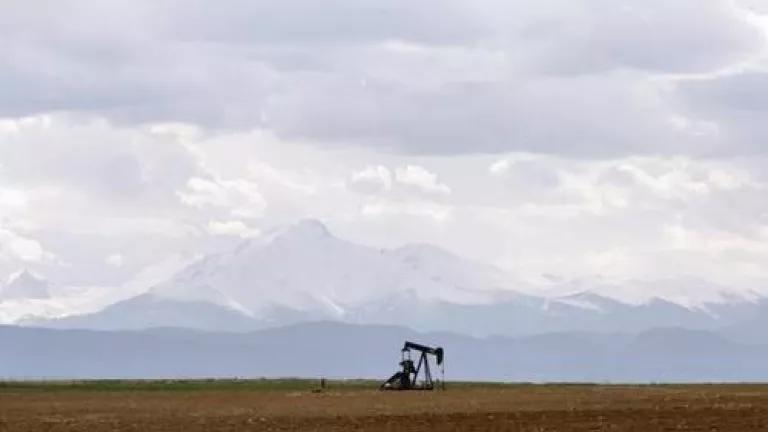
Last weekend, Colorado’s Air Quality Control Commission adopted important final standards that will rein in methane pollution from the state’s booming oil and gas industry. These standards, which Governor Hickenlooper proposed last November, are the first set of rules to directly regulate the release of methane, a potent greenhouse gas, from the oil and gas sector. And the standards should not only improve air quality but will largely pay for themselves because companies get to sell the methane they save.
Although these final standards represent a big step forward in reducing air pollution from oil and gas development in Colorado, there is still room for improvement. We will be urging EPA and other states to follow Colorado’s lead but go even further to limit methane and other air pollutants.
Credit: Reuters
Nonetheless, the new standards are a great starting point as a model for EPA and other oil and gas-producing states. Firstly, the standards are the first rules to directly regulate methane emissions. Secondly, they would go much further than EPA’s recently established standards to control smog-forming and other pollution (and only indirectly address methane) from the oil and gas industry, such as by: requiring that operators find and stop the leaks that can emit hundreds of thousands of tons of methane, as well as other harmful pollutants; requiring retrofitting of high-emitting equipment with better low-emitting technologies; and requiring controls from all wells, including oil and gas. These requirements are more fully described in my previous blog.
NRDC participated in the Colorado rulemaking as part of a coalition of local and national environmental groups led by Denver-based organization Earthjustice attorneys Mike Freeman and Robin Cooley. Although the rules had the support of three major oil and gas companies, much of the industry still sought to weaken the standards. Fortunately, the Commission rejected their various arguments to limit the standard’s scope and effectiveness.
On the other hand, while the Commission did not make the proposed rules stronger, it did commit to pursue three additional avenues recommended by our coalition’s expert witnesses. The first was a commitment by the Regional Air Quality Council to model the standards’ air quality impact to ensure that air quality in Colorado will meet federal standards for ozone and other pollutants. The second was to have the Commission staff consider standards for intermittent-bleed controllers, which the coalition’s expert, David McCabe, showed in his testimony are a major source of methane and other hydrocarbon emissions. Likewise, the Commission agreed to study methane emissions from compressors used to move natural gas downstream of processing plants.
All told, these final standards represent a big step forward in reducing air pollution from oil and gas development in Colorado. While there is still room for improvement in Colorado, the standards provide a good starting point for the rest of the nation.
Interestingly, even as these stronger standards are passed to control air pollution, Coloradans are seeking greater local control to rein in unfettered and unscrupulous fracking. There are myriad risks that fracking poses to public health and the environment beyond air pollution that the state has yet to sufficiently safeguard its citizens against. This is clearly not lost on Coloradans. The recently approved air pollution controls should be just the first in a larger effort to better protect the people of Colorado from all of fracking’s risks—that is something NRDC will continue to push for.
(Co-authored by Ben Longstreth)
